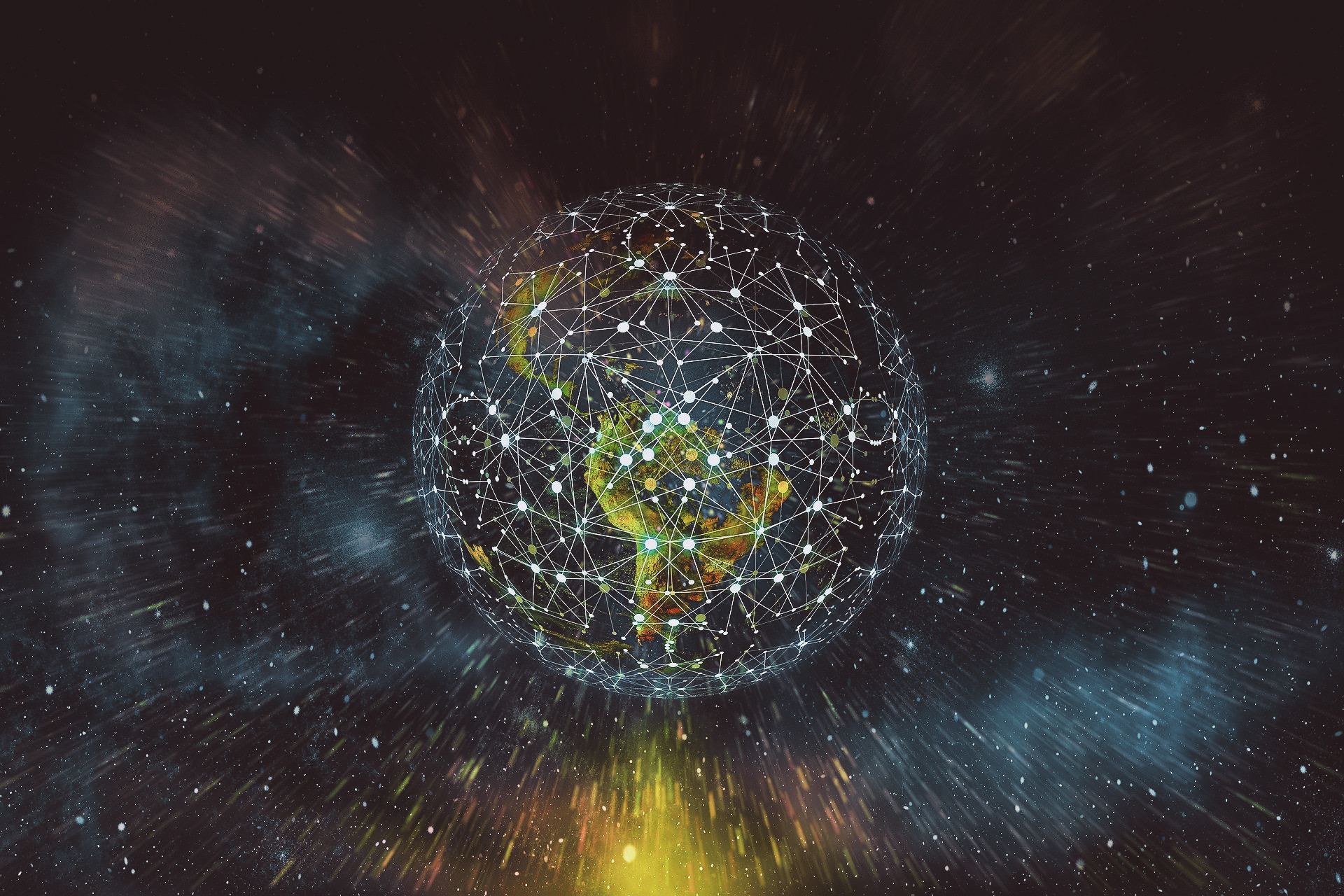Each of these technological trends has its own set of applications and benefits, their combined use, if relevant to your specific context, is unquestionably the best approach to deployment.
Your company needs to cut expenses, increase margins, or reinvest. Or perhaps your company is still attempting to expand. Maybe it’s time for a pivot — to reinvent the business strategy. Some of you may even need to do all of these things at the same time.
This list can be used by business leaders and engineers to evaluate the potential effect of these technology trends on specific strategies such as increasing revenue, accelerating digital, maximizing value from data, protecting & building your brand, and developing robust web applications.
These trends may represent a risk or an opportunity for your organization, and this list will assist you in developing a technology roadmap to drive effect on a variety of strategic goals.
You can predict when these trends will be most pertinent by looking at when they will be most relevant.
Top 9 Business Technology Trends to Watch Out for 2023
1. Hyper Automation
2. Cloud Computing and Data Science
3. Digital Immune System (DIS)
4. Quantum Computing
5. Edge Computing
6. Cyber Security
7. Datafication
8. Blockchain
9. AI and ML
10. IoT
1. Hyper Automation
The most basic RPA bots can be made by recording a user’s clicks and keystrokes while interacting with an app. When issues arise, a user can simply observe how the bot connects with the app and identify the steps that need to be tweaked.
In reality, these rudimentary recordings are frequently used as a starting point for developing more robust bots that can adapt to changes in screen size, layout, or workflow.
RPA is creating new jobs while changing current ones but according to Forrester Research RPA automation will threaten the lives of 230 million or about 9% of the global workforce. According to McKinsey, only about 5% of jobs can be completely automated, but about 60% can be partially automated.
RPA tools can also be linked to AI modules with features such as OCR, machine vision, natural language understanding, and decision engines, resulting in intelligent process automation. These features are sometimes bundled into cognitive automation modules designed to support best practices for a particular industry or business method.
2. Digital Immune System
People’s faith and trust in digital technologies have grown as they have been accommodated and entangled with devices and technologies. This familiar digital trust is another important development that will lead to more innovations. People who have digital conviction believe that technology can establish a secure, safe, and reliable digital world and assist businesses in inventing and innovating without fear of losing the public’s trust.
Cybersecurity and ethical hacking are two main specializations you can pursue to make the digital world a safer place. There are a variety of positions available in these two industries, ranging from junior to senior levels. Professional certifications may be required for ethical hacking, whereas a diploma or even a master’s degree is adequate for a high-paying job in cybersecurity.
3. Quantum Computing
Quantum computing is a branch of computer science that focuses on the creation of technologies based on quantum theory principles. Quantum computing solves issues that are too complex for classical computing by utilizing the unique properties of quantum physics.
The advancement of quantum computers represents a significant advancement in computing capability, with the possibility for massive performance gains in particular use cases. Quantum computing, for example, is expected to excel at tasks like integer factorization and simulations, and it has the potential to be used in sectors like pharmaceuticals, healthcare, manufacturing, cybersecurity, and finance.
Quantum computers have become hundreds of times quicker than conventional computers, and big companies like Splunk, Honeywell, Microsoft, AWS, Google, and others are investing in Quantum Computing innovation. The global quantum computing industry is expected to surpass $2.5 billion by 2029.
4. Edge Computing
The generation, collection, and analysis of data at the place of generation, instead of in a centralized processing system such as a data center, is referred to as edge computing. It employs digital IoT (Internet of Things) devices, which are frequently put in disparate locations, to transmit data in real time or later to a central data repository.
Users benefit from faster, more reliable services when computing services are placed closer to edge sites or devices, while businesses benefit from being able to process data more rapidly and support applications without worrying about latency.
Edge computing can supplement a hybrid computing paradigm and is particularly useful for:
1. Several stages of the artificial intelligence/machine learning lifecycle, such as data collection, app deployment, inference, and monitoring the operation as new data is gathered.
2. Coordinating activities across geographical boundaries
3. Autonomous vehicles
4. Virtual reality/augmented reality
5. Cyber Security
Cyber security is defined as the collection of methods, technologies, and processes used to safeguard the confidentiality, integrity, and availability of computer systems, networks, and data from cyber-attacks or unauthorized access. The primary goal of cyber security is to safeguard all organizational assets from both external and internal threats, as well as natural disaster disruptions.
Because organizational assets consist of numerous disparate systems, an effective and efficient cyber security stance necessitates coordinated efforts across all of its information systems.
As a result, cyber security is divided into subdomains such as Database and Infrastructure Security, Application Security, Identity Management and Data Security, Network Security, Mobile Security, Cloud Security, Disaster recovery and business continuity planning (DR&BC), Identity Management and Access Control are some of them.
6. Datafication
Datafication is essentially the transformation of everything in our lives into data-powered devices or software. In a nutshell, Datafication is the transformation of human tasks into technology powered by data. Data is here to stay for longer than we can recall, from our mobile devices, industrial equipment, and office applications to AI-powered appliances and everything else! As a result, keeping our data kept correctly, securely, and safely has become a high-demand specialization in our economy.
Datafication increases the demand for IT experts, data scientists, engineers, technicians, managers, and many other positions. Even better, anyone with a solid understanding of technology can pursue accreditation in data-related specializations to find work in this field.
As a result, businesses must depend on data-driven initiatives to create a qualified workforce and a strong corporate culture now more than ever. The best option is to delegate this strategy to a partner who is an expert in the field.
7. Blockchain
People associate blockchain technology with cryptocurrencies such as Bitcoin, blockchain technology provides security that is helpful in a variety of other ways. To put it simply, blockchain is data that you can only add to, not subtract from or alter. Because you’re creating a data chain, the word “chain” was coined. The inability to change prior blocks is what makes it so secure. Furthermore, because blockchains are consensus-driven, no single entity can gain possession of the data. Blockchain eliminates the need for a trusted third party to oversee or verify transactions.

A blockchain organizes its data into linked segments (blocks), whereas a database usually organizes its data into tables. When applied decentralized, this data structure creates an irreversible data timeline. When a block is completed, it becomes permanent and becomes a component of this timeline. When a block is added to the chain, it is assigned an exact timestamp.
At its core, blockchain technology is straightforward to grasp. Essentially, the technology exists as a shared database with entries that must be verified and encrypted by peer-to-peer networks.
8. AI and ML
Artificial intelligence, or AI, has gotten a lot of attention over the last decade, but it remains among the new technology trends. AI is already well-known for its superiority in image and voice recognition, navigation apps, smartphone personal assistants and a variety of other customized software development and products.
Machine Learning, a subset of AI, is also being used in a wide range of sectors, resulting in a high demand for skilled professionals. According to Forrester, AI, machine learning, and automation will generate 9% of new jobs in the United States by 2025, making it yet another new technology trend to keep an eye on.
By 2025, the AI market will be worth $190 billion, with worldwide spending on cognitive and AI systems exceeding $57 billion in 2023. As AI spreads across industries, new jobs will be developed in areas such as development, programming, testing, support, and maintenance, to mention a few. AI, on the other hand, provides some of the highest salaries today.
9. IoT (Internet of Things)
The Internet of Things (IoT) is a network of physical objects or “things” embedded with sensors, software, and connectivity that allow them to gather and exchange data with other devices and systems via the internet. Simple household appliances, such as thermostats and smart lights, to more complicated devices, such as industrial machinery and vehicles, are examples of these things. These objects’ data can be used to improve efficiency, automate processes, and provide valuable insights to people and organizations.
According to projections, around 50 billion of these IoT devices will be in use worldwide by 2030, resulting in a massive network of interconnected devices ranging from smartphones to household appliances. Global Internet of Things (IoT) expenditure is expected to hit a staggering 1.1 trillion dollars in 2023.
Some prominent uses of IoT:
1. Smart home thermostats and security devices
2. Health and fitness monitoring wearables
3. Diagnostics for self-driving cars
4. Intelligent factory automation
5. Smart city lighting and traffic networks
6. Crop surveillance
7. Retail supply chain monitoring
8. Disease surveillance and diagnosis
To Sum Up
Each of these technological trends has its own set of applications and benefits, their combined use, if relevant to your specific context, is unquestionably the best approach to deployment. IoT, AI, and the other technological trends are already transforming today’s companies.
While large companies can easily incorporate new technologies into their operations, the situation for small businesses is different and more difficult, given the realities of limited resources, including time constraints. Similarly, there is the challenge of determining which of these new technological trends are required for your operations. This is why it is recommended that SMBs first determine the need for a specific technology and then test it before making a decision.


Join the conversation!